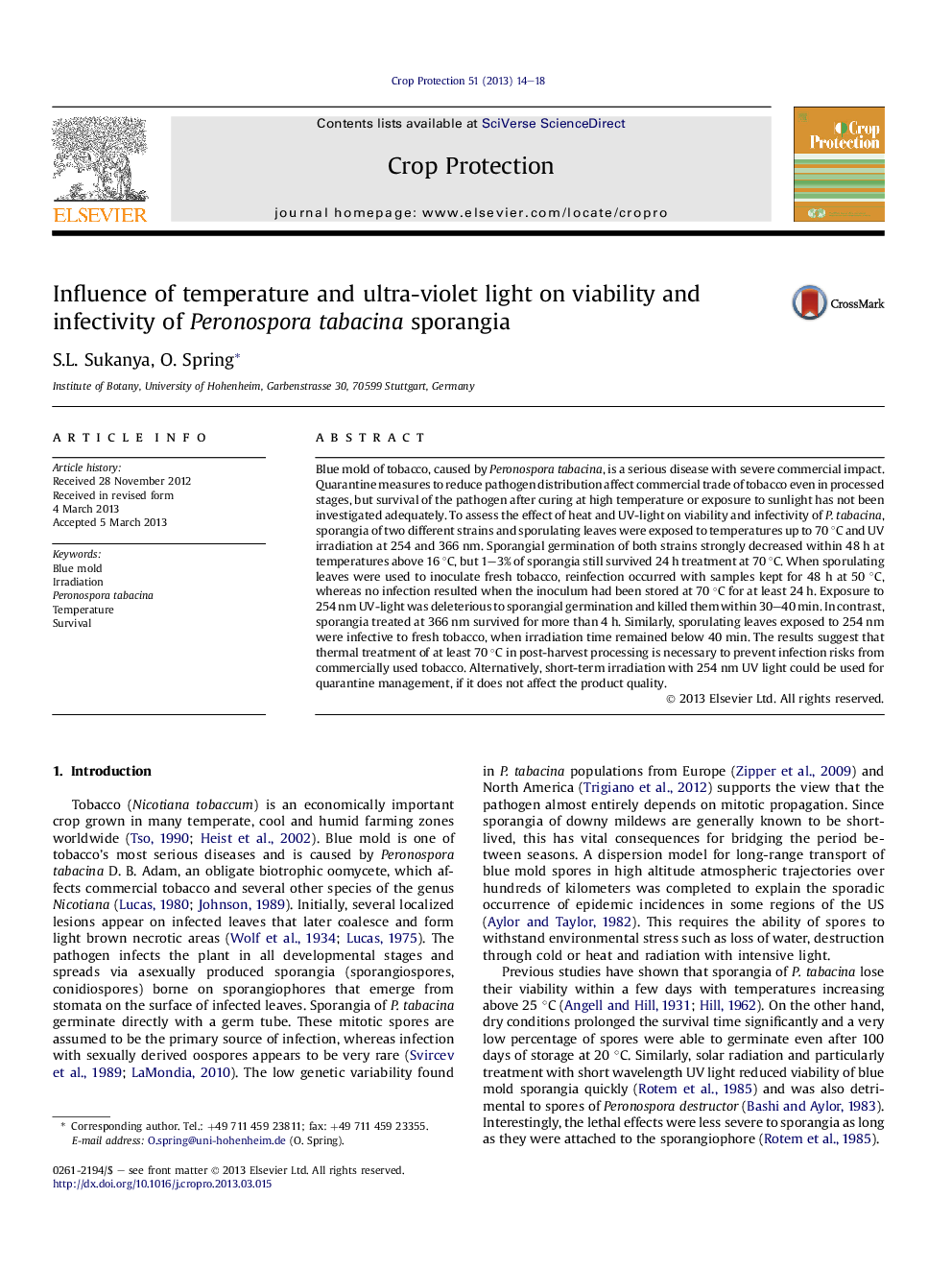| Article ID | Journal | Published Year | Pages | File Type |
|---|---|---|---|---|
| 4506065 | Crop Protection | 2013 | 5 Pages |
Abstract
Blue mold of tobacco, caused by Peronospora tabacina, is a serious disease with severe commercial impact. Quarantine measures to reduce pathogen distribution affect commercial trade of tobacco even in processed stages, but survival of the pathogen after curing at high temperature or exposure to sunlight has not been investigated adequately. To assess the effect of heat and UV-light on viability and infectivity of P. tabacina, sporangia of two different strains and sporulating leaves were exposed to temperatures up to 70 °C and UV irradiation at 254 and 366 nm. Sporangial germination of both strains strongly decreased within 48 h at temperatures above 16 °C, but 1-3% of sporangia still survived 24 h treatment at 70 °C. When sporulating leaves were used to inoculate fresh tobacco, reinfection occurred with samples kept for 48 h at 50 °C, whereas no infection resulted when the inoculum had been stored at 70 °C for at least 24 h. Exposure to 254 nm UV-light was deleterious to sporangial germination and killed them within 30-40 min. In contrast, sporangia treated at 366 nm survived for more than 4 h. Similarly, sporulating leaves exposed to 254 nm were infective to fresh tobacco, when irradiation time remained below 40 min. The results suggest that thermal treatment of at least 70 °C in post-harvest processing is necessary to prevent infection risks from commercially used tobacco. Alternatively, short-term irradiation with 254 nm UV light could be used for quarantine management, if it does not affect the product quality.
Related Topics
Life Sciences
Agricultural and Biological Sciences
Agronomy and Crop Science
Authors
S.L. Sukanya, O. Spring,
